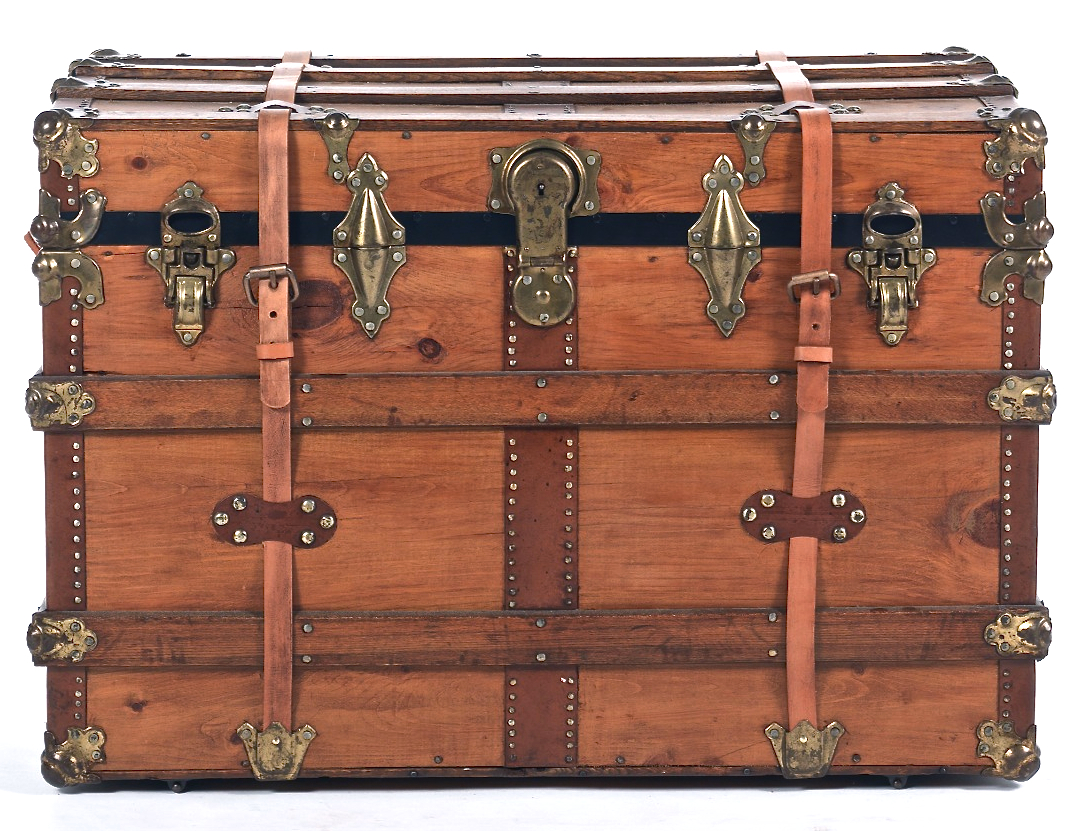

Title: Antique Hand Made Wood Steamer Trunk
Shipping: $29.00
Artist: N/A
Period: Unassigned
History: N/A
Origin: N/A
Condition: Very Good
Item Date: 1900 to 1930
Item ID: 6496
{Price Upon request} Private sale by owner. Status: Exclusive / Consignment. We Are Art Advisers. Wood trunk with leather and nail-head trim, leather handles, two interior removable drawers, with brass locks, no key, on wheel feet. Condition: Interior outfitted with newer paper. Restored, new leather. 24"T x 34¼"L x 21"D *All of the art is edited and chosen by us for its high quality and workmanship before posting. These collectibles have been selected with the artist & collector in mind. * We specialize in high end luxury fine art and collectibles from private estates. - Our job is to find and target great art by collecting a vast array of contemporary, vintage, antique and collectible items from across the globe. Individually handcrafted, we breathe new life into these forgotten relics by giving back each piece it's unique story. We welcome dealers, galleries, and private collectors to register securely and buy with us.
Link: http://en.wikipedia.org/wiki/Trunk_(luggage)
A trunk, also known as a travel trunk, is a large cuboid container for holding clothes and other personal belongings, typically about 30 inches to 36 inches long with varying widths of 16 to 22 inches and various heights. They were most commonly used for extended periods away from home, such as for boarding school, or long trips abroad. Most trunks are now used as either furniture such as glass-covered coffee-tables or decorative storage for everything from blankets and linens to memorabilia and military paraphernalia. Trunks are differentiated from chests by their more rugged construction due to their intended use as luggage, instead of the latter's pure storage.
Among the many styles of trunks there are Jenny Lind, Saratoga, monitor, steamer or Cabin, barrel-staves, Octogon or bevel-top, wardrobe, dome-top, barrel-top, wall trunks, and even full dresser trunks. These differing styles often only lasted for a decade or two as well, and—along with the hardware—can be extremely helpful in dating an unmarked trunk.